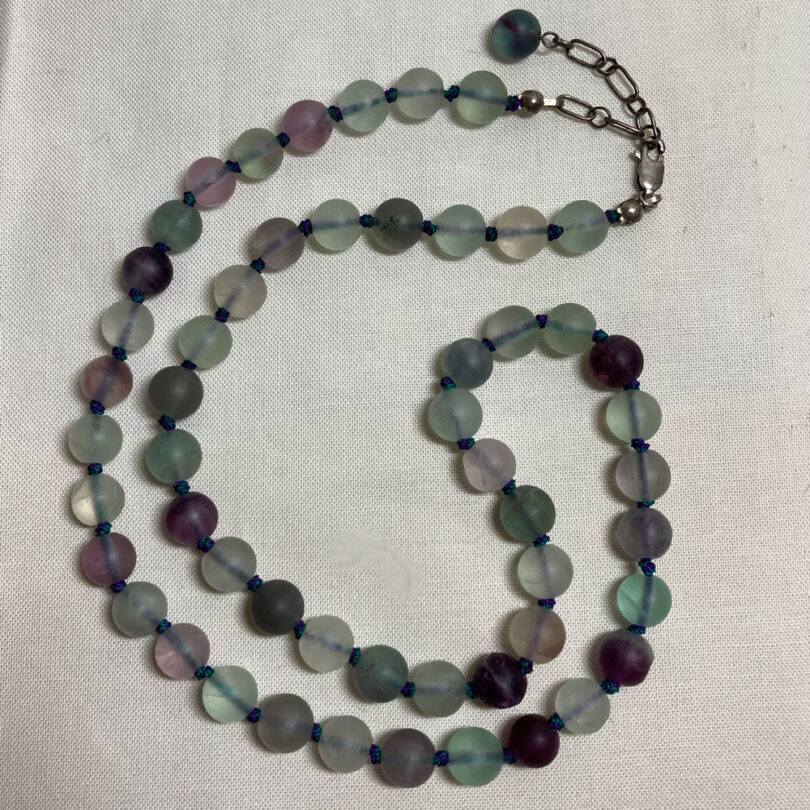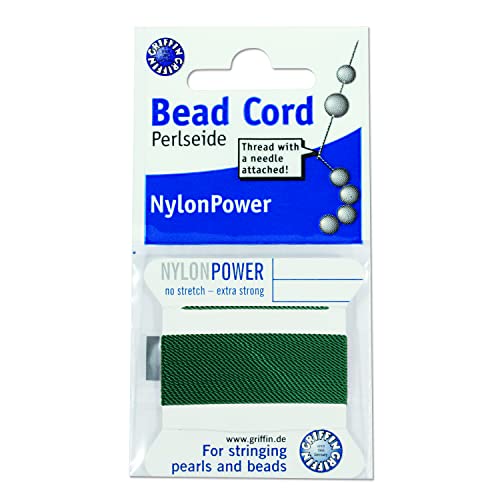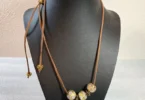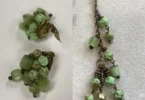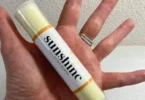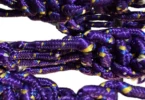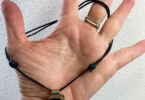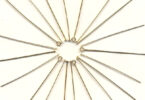This simple but versatile Half Hitch knot will be one that you’ll want to learn as one of the best knots for beading projects
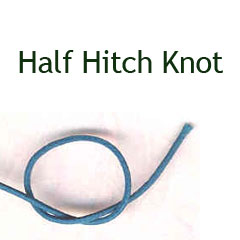
This is the the simple loop that you form with your cord to start a Half Hitch knot.
Be sure to position the knot in the correct position before tightening. Even though this is a very simple knot, it can be very hard to get out, especially when tied in Waxed Cord or Silk.
To make a beaded grouping you tie your first Half Hitch knot and tighten it. Thread the desired beads onto your cord, then form the loop for the second knot.
Slide the knot close to the beads, being careful not to completely tighten the knot until it is holding the beads snuggly together. A stiff head pin or tweezers with pointed ends can help you slide and position the loop before tightening.
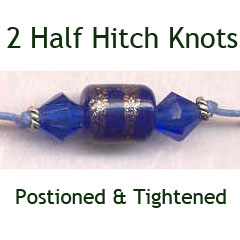
This is the same knot that people use to create pearl necklaces where a knot appears between each pearl. Pearl Necklaces were traditionally tied on Silk thread. Since silk dries and wears out over time, beaders now sometimes choose to use other materials for making knotted necklaces.
The necklace shown in the Featured image at the top of this post is made from 8mm Frosted Fluorite beads with a knot between each one, just as you would see on a knotted Pearl necklace. I strung and knotted this using #6 Perlseide Bead Cord, NylonPower in a Greem color.
Griffin Beading thread comes on cards that hold 2 meters of thread, with a flexible needle already attached to the thread. It is a quick and simple way to get stringing beads quickly. It can be used for pearls, gemstone, glass and other beads. I am linking you to the #6 Green that I used in my Fluorite necklace, but there are many colors and thicknesses available on the landing page.
Other forms of Half Hitch Knot
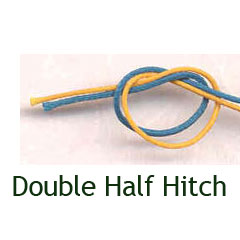
When doing off loom bead weaving (Peyote stitch, Square stitch, etc.), this knot can be used
to join new thread to your project when the previous thread has gotten too short to continue.
Align the ends of the new and old thread – then tie the Half Hitch using both threads.
If it is important that the ends of the cord go in opposite directions when you tighten the knot, you can use the Interlocking Half Hitch knot instead. This is what it looks like before tightening.
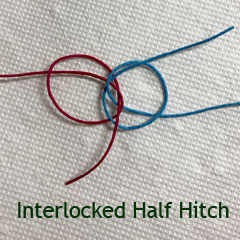
A Half Hitch Knot Can Act as a Clasp
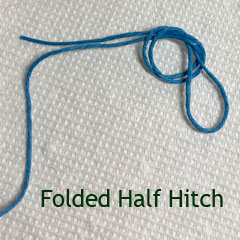
The Folded Half Hitch knot is a good one for making a loop at the end of your piece of jewelry when
you are using your cord doubled. This can act like the loop side of a Toggle Clasp, and the loop can go over a bigger bead or a button to form an inexpensive clasp.
This is what the Folded Half Hitch looks like after you tighten the cord. If you use beads with big enough holes, such as these 6/0 Seed Beads, the loose end of the cord can get inserted inside of the beads, forming a neatly finished look.
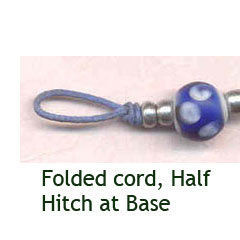
This knot is sometimes also referred to as an “Overhand Knot”, which describes the motion you make when you are forming the loop.
Half Hitch Knots for Stretch Bracelets
When finishing the ends of stretchy cord (Elasticity, Stretch Magic) the Half Hitch is also useful. String your beads on the stretchy thread, then make the last bead on each end a seamless crimp bead with a hole that is big enough to put two thicknesses of the cord through it.
Align the two ends side by side and half hitch them together. Separate the ends, run each one back through the crimp on the same side and close the crimp using crimping pliers. Tube crimps are best with elastic since they are less likely to cut cord than round bead crimps (like Tigertail crimps).
What Cord Should I Use?
When choosing a cord material, there are lots of things to consider, the most important being diameter of the cord. When making jewelry where I am stringing glass beads, similar to the two pictures on this page with blue glass beads, I use 1mm Waxed Cord and I coordinate the cord color with the beads I will be using. Check the hole diameter of your beads, but Czech glass and Lampwork often have holes that are 1.5mm and larger.
This set will get you started making knotted cord necklaces and bracelets in a wide variety of colors. The diameter of the cord is approximately 1mm.
Other Knotting Resources
I hope you enjoyed this installment of Best Knots for Beading. You may also want to visit the Sliding Knot Tutorial if you have an interest in making Jewelry such as necklaces or bracelets using cord. Another method for making the sliding length adjustment for a necklace can be found in this detailed tutorial Adjustable Length Necklace – No Sliding Knot Required!
Other useful knotting techniques can be found in the Square Knot and Surgeon’s Knot Tutorial – covering knots that are a little bit more complex than the simple half hitch.


